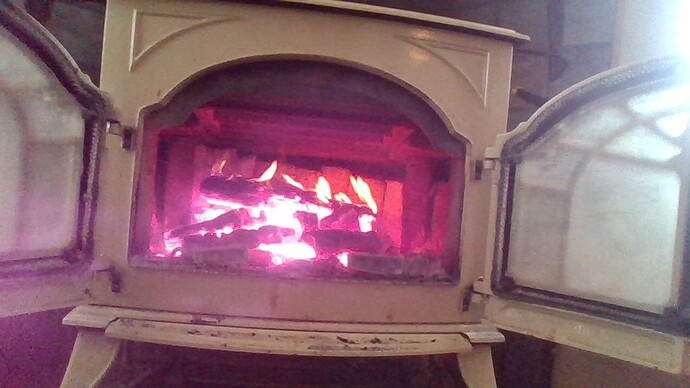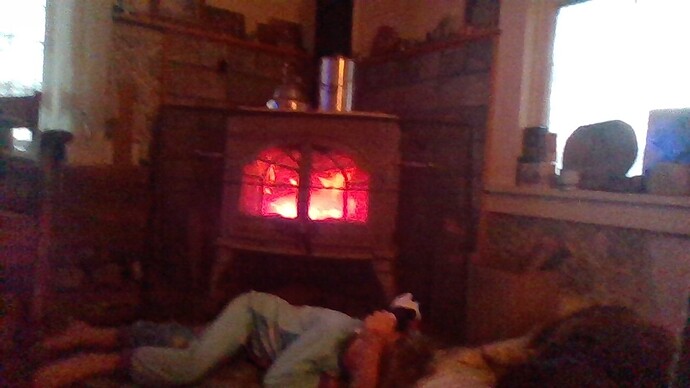Friends, I am really impressed with how many different procedures you have given, there will be a lot to consider. Kamil is a very interesting sketch, it just gets complicated in my head. Jan, do you know how the heart of the gasifier is made? I guess it has a low and wide fire zone (similar to Joni) and air nozzles near the grille, so pyrolysis and oxidation is done in a gasifier and the reduction is only partially and partially in a cyclone. There are bottom-up gasifiers, where all the gasification processes take place on the surface in a narrow wide layer, but the gas is not so clean.
He has made tables on how the generators should be according to engine size, today he has a cheva 4.3 liter engine in one of the cars.
I have to agree, if you are getting any kind of live charcoal into the slyclone and can be burned up, there is some over pulling of the gasifer going on passed the charcoal bed reseve. This should be causing a heater effect in the gasifer. This is not good causing weak gas production. The charcoal bed is to shallow after the restiction zone. It needs more reserves.
On my Gasifier I can have 1360°f to 1500°f or 737.8°c to 815.6°c at the grate. By the time the dead gases have moved from the grate to the drop box the temperature has cooled down to 400°f to 450°f or 204.4°c to 232.2°c ranges. If there was live sparks of charcoal in this area, it would weaken my gases by burning them up because there is oxygen present. It is possible to have high heat at the grate but no oxygen at the grate left to burn gases. If a trace of charcoal is still burning as it passes the grate it should be out in less then a second. No oxygen to burn no more heat increases.
Bob
The reaction of producing methane is possible only at temperatures above 400 C⁰ and in the presence of an iron catalyst … So I am not too sure that such temperatures can be reached in a cyclone. And given that the reaction proceeds with the absorption of energy, and adding to this the loss of heat during transportation and contact with the walls, I am sure that the final and total efficiency of the system will be much less for Imbert and WK.
I must also add that the product of the reaction of obtaining methane from the generator gas is molecular carbon, that is, soot …
(During combustion, it becomes water gas, ie the hydrogen is released from the oxygen, however, these are drawn to each other later in the process when it cools down. I put in a net in the cyclone that caught the carbon which continued to glow, this means that the released oxygen is used in the process and the hydrogen gas remains in the gas.)
Jan, this observation of his is not correct. He imagines a water molecule just splitting in to hydrogen and oxigen in a gasifier wich is not the case.
Whats happening is carbon (charcoal) wants to bond with oxigen. A lot! Just like in an iron ore smelt, where carbon is used to steal the oxigen from the iron oxide ore, leaving iron behind. Here, carbon steals the oxigen atom from a H2O molecule to form CO leaveing hydrogen behind. Carbon just wants that oxigen more.
Ok l just came up with a love story called “The Gasifier love triangle”  bear with me…
bear with me…
One day, this marryed couple walked in a bar called “The Gasifier”. They were named Mr Hydrogen and Mrs Oxigen. At the bar, there was this bartender called Carbon. He was glowing with atraction and as things heated up in the bar, Mrs Oxigen found Carbon way more atractive thain Mr Hydrogen. The marridge was over and Mr Hydrogen left the Gasifier bar alone, and Miss Oxigen hooked up with this new guy Carbon.
The story culd end there but then one day the shamed, now single Mr Hydrogen decided to visit this new bar, called “The Iron Catalyst” to much of his surprice, he met his Ex wife and the guy that stole her there. They talk and drink for some time, things start to get hot. But the thing is, “The Iron Catalyst” is in fact a swinger bar. Sufficiantly intoxicated, they decide to give it a try, all together for some experimentation action  but things dont go as planned… At least not for Miss Oxigen. To spare the details, she left the swinger bar alone that night… CH4 was the cause
but things dont go as planned… At least not for Miss Oxigen. To spare the details, she left the swinger bar alone that night… CH4 was the cause 
Joke aside. I belive l found what Werner is up to. My thinking is he probably has a too small reduction zone for his engine. A lot of unreacted gases pass trugh, along with a lot of heat. Those can then react a second time in his cyclone. In a way, his cyclone acts as a second reduction zone for the gases that hadnt had the time to react in the actual gasifier.
Ok, that was a good story anyway.
Wondering if I have the same problem, mine is over 300c after the cyclone already after a few km.
A little strange that all the old tables about Imbert have such short spaces both above and below restriction?
Wayne has shown that it works with more space.
I suspect its because a true lmbert isnt just the hearth. Its the whole combo. Heated hopper will pre-char the wood before it comes to the hearth. This means the actual hearth can run hotter, hotter means faster, faster means it can be smaller. Just a speculation…
BINGO!!, Joni. Than you for this explanation.
I have seen this in a few of Ben Persons early carbon steel, Woodie named series of gasifers.
Engine powerful gas but they were also terrible soot makers.
Too much soots causing for too much operational maintenances.
He evolved his systems to make less soots.
Ha. WE always just blamed the Douglas Fir woods.
Steve Unruh
BINGO!! Too, Kristijan
American large inline 6 → largish V-8 → largish → V-6 . . . hearth experiences derived from smaller systems . . .
Now this is just me . . .
I am always more concerned with daily use from cold start; thru-usage; then the finishing setting up for the next from cold start.
That is milking the cows, the goats, twice a day. Batch cycle ain’t done until everything is cleaned up, and bleach rinsed; setting up for the next milking.
Steady state conditions only happen in Laboratories; and 24/7 manufacturing. ( And even they must periodically fully shut down; go-cold; for accumulative’s; built-ups; cleaning ups.)
Steve Unruh
JanA,
There are good reasons why S.E.Werner; Niklas Alexandersson; Johan Linell; Johan Hedenberg; Vesa Mikkonen and others, choose to not forums participate.
S.U.
I do not understand what you mean?
I have to ask, how do you make water gas (CO + H2)?
It happens whenever water contacts glowing carbon.
Is there anything that says how much charcoal is needed to reduce the gas, or does it just depend on the size of the charcoal?
Is CO converted to CO2 when the heat in the charcoal is below a certain temperature?
Yes. About one kilo of char will reduce about 1, kilo of water. Theoreticly, as there are also losses.
Charcoal gets used up just like it wuld burn off.
No. As long as there is no free oxigen the CO will stay as it is.
Steve, lm afraid l need to question this theory. First, soot is just a minor side product of this reaction. Main side products are water and CO2. Kinda like ash in a wood fire… Second, the amount of surface area needs to be VAST. the catalyst consists of nanoparticles of special treated iron (usualy with some promotors like potassium) to get any real resaults out. But you never know…
Kristijan I have removed my observations from the comment above.
I am not collage educated, I do not theorize.
Only observe.
Observe these:
I wood stove operate HOT, HOT with minimum amounts of allowed air. And do use up in-stove, all woodchar. The inside of my stove is never carboned black by the end of a daily use cycle.
My disappearing in direct char contact iron grate is the sacrifice of these methods.
Wood ash has high potassium.
S.U.







